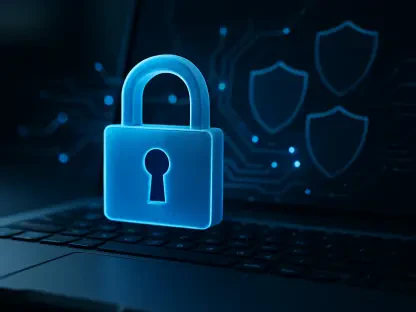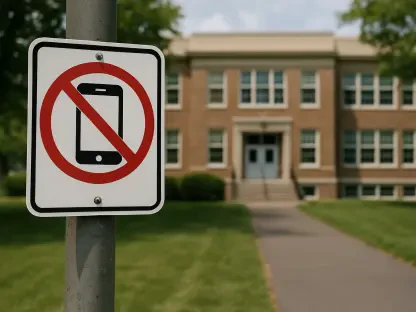In an era where technology permeates every aspect of life, the traditional classroom has undergone a profound transformation, shifting from chalkboards and textbooks to interactive digital platforms and virtual learning environments. This rapid evolution has placed unprecedented demands on educators, who must now navigate a landscape filled with learning management systems, artificial intelligence tools, and hybrid teaching models to deliver effective instruction. The urgency to adapt is not merely a trend but a fundamental requirement, as digital proficiency directly impacts student engagement and learning outcomes in today’s tech-driven world. However, the reality for many teachers is a stark contrast to this ideal, with numerous challenges standing in the way of mastering these essential skills. Gaps in training, limited access to resources, and disparities in technological infrastructure have created a significant divide, leaving many educators struggling to keep pace with the expectations of modern education. This situation was laid bare during the global shift to remote learning prompted by the COVID-19 pandemic, which exposed the critical need for digital competence across all levels of teaching. Yet, amidst these obstacles, there are promising pathways forward. Targeted programs and systemic changes offer hope, providing educators with the tools and support needed to thrive in digital classrooms. By embracing innovative training and fostering a culture of continuous learning, teachers can transform challenges into opportunities, ultimately shaping a future where technology enhances education for every student.
Understanding the Digital Shift in Education
Why Digital Skills Matter Now More Than Ever
The global push toward digitalization in education has fundamentally altered the way knowledge is imparted and absorbed, with technologies such as interactive platforms, artificial intelligence, and virtual reality becoming integral to the learning process. These advancements offer unparalleled opportunities to personalize education, engage students through dynamic content, and prepare them for a digital economy. However, this shift places a heavy burden on educators, who must possess the skills to effectively integrate these tools into their teaching. Without such proficiency, teachers risk becoming disconnected from the needs and expectations of tech-savvy students, ultimately hindering academic progress. The stakes are high, as digital skills are no longer a supplementary asset but a core component of effective pedagogy. Educators equipped with these abilities can create immersive, interactive experiences that captivate learners and foster critical thinking, while those lacking them may struggle to maintain relevance in an increasingly digital classroom environment. This reality underscores the pressing need for comprehensive training that goes beyond basic familiarity with technology, focusing instead on strategic application to enhance educational outcomes.
Moreover, the importance of digital skills extends beyond individual classrooms to the broader educational landscape, where they play a pivotal role in addressing systemic challenges. As schools worldwide adopt hybrid and remote learning models, teachers must be adept at managing online platforms, troubleshooting technical issues, and designing lessons that translate effectively across digital formats. This capability is particularly crucial in ensuring continuity of education during unexpected disruptions, as evidenced by past global crises. Furthermore, digital proficiency enables educators to leverage data-driven insights, allowing for tailored interventions that meet diverse student needs. By mastering these skills, teachers not only elevate their own teaching practices but also contribute to building resilient education systems capable of withstanding future challenges. The momentum behind digital transformation in education shows no signs of slowing, making it imperative for educators to embrace this change as a cornerstone of their professional development.
Addressing the Gap in Teacher Preparedness
A significant barrier to the digital transformation of education lies in the widespread lack of preparedness among teachers, many of whom have not received adequate training to navigate the complexities of modern tools. Traditional teacher education programs often prioritize subject matter expertise and conventional classroom management techniques, leaving little room for instruction on digital literacy or technology integration. This oversight has resulted in a workforce that, while knowledgeable in content, often lacks the confidence or know-how to use digital resources effectively. The consequences of this gap became glaringly apparent during the sudden pivot to remote learning in recent years, when many educators struggled with basic online teaching platforms, let alone advanced interactive tools. Addressing this shortfall demands a fundamental overhaul of teacher training, one that embeds digital competencies as a core pillar of professional preparation, ensuring educators are equipped to meet the demands of 21st-century classrooms.
Beyond the curriculum, the gap in preparedness is compounded by inconsistent access to ongoing professional development opportunities, particularly for those in under-resourced schools. Many teachers express a willingness to learn but face barriers such as time constraints, outdated training materials, or a lack of institutional support. To close this divide, education systems must prioritize accessible, relevant training that reflects the latest technological advancements and pedagogical strategies. This could involve partnerships with tech providers to offer real-time learning modules or the creation of peer-learning communities where educators share best practices. By focusing on practical, hands-on experiences rather than theoretical knowledge alone, training initiatives can empower teachers to overcome initial hesitations and build a solid foundation in digital skills. Such efforts are not just about catching up but about positioning educators to lead innovation in their schools, ensuring they are not left behind as technology continues to evolve.
Overcoming Barriers to Digital Adoption
Tackling the Digital Divide
One of the most formidable obstacles to digital adoption in education is the persistent digital divide, which disproportionately affects teachers and students in rural and low-income communities. Limited access to reliable internet, modern devices, and technical support creates a stark disparity, preventing many educators from engaging with digital tools that are commonplace in more affluent areas. This inequity directly translates to diminished learning opportunities for students, perpetuating cycles of educational disadvantage. For instance, a teacher without access to a learning management system cannot assign interactive homework or track student progress in real time, placing their students at a disadvantage compared to peers in better-equipped schools. Tackling this divide requires targeted interventions that prioritize infrastructure development, such as providing subsidized devices or establishing community internet hubs. Only through such measures can the foundation be laid for equitable digital education, ensuring that geography or socioeconomic status does not dictate access to quality learning.
Equally important is the provision of tailored professional development for educators in underserved areas, as access to technology alone is not enough without the skills to use it effectively. Programs must be designed with the unique challenges of these communities in mind, offering mobile-friendly resources and offline training options to accommodate limited connectivity. Additionally, partnerships between governments, schools, and non-profit organizations can facilitate the distribution of essential tools and the training needed to maximize their impact. By focusing on these marginalized groups, initiatives can address the root causes of the digital divide, creating a ripple effect that enhances student outcomes and strengthens entire education systems. This approach not only bridges immediate gaps but also lays the groundwork for long-term equity, ensuring that no educator or student is excluded from the benefits of a digital classroom due to external constraints.
Building Confidence with Technology
For many teachers, the journey to mastering digital skills begins with overcoming a deep-seated apprehension or unfamiliarity with technology, a barrier that can be as daunting as any lack of resources, and this hesitation often stems from a fear of making mistakes in front of students or a perception that digital tools are too complex to learn. However, building confidence is achievable through structured, supportive environments that encourage experimentation without judgment. Tiered workshops, starting with basic skills like navigating cloud platforms and progressing to advanced topics such as designing interactive lessons, can provide a clear learning pathway. These sessions should emphasize hands-on practice, allowing educators to troubleshoot real-world scenarios in a low-pressure setting. By gradually increasing complexity, such training helps demystify technology, transforming it from an obstacle into a powerful ally in the classroom.
Support systems play a crucial role in sustaining this newfound confidence, ensuring that teachers do not feel isolated in their digital journey, and providing the necessary backing to navigate new technologies. Mentorship networks, where experienced educators guide their peers through challenges, can foster a sense of community and shared learning. Virtual coaching sessions and online forums further enhance this support, offering accessible platforms for asking questions and exchanging ideas. Additionally, creating safe spaces for trial and error—such as school-based demonstration labs where teachers can test tools before using them in lessons—can significantly boost self-assurance. When educators see tangible improvements in student engagement or lesson efficiency as a result of their efforts, their initial reluctance often gives way to enthusiasm. This shift in mindset is vital, as confidence not only improves individual performance but also inspires colleagues to embrace digital tools, creating a culture of innovation within schools.
Strategies for Mastering Digital Skills
Comprehensive Training Programs
To effectively equip teachers for the demands of modern classrooms, comprehensive training programs must form the backbone of any effort to enhance digital skills, offering structured learning that addresses a wide range of competencies. These programs should encompass foundational areas such as digital literacy, which includes proficiency in collaborative tools and cloud-based systems, as well as more specialized topics like blended learning techniques and cybersecurity. The curriculum needs to be practical, incorporating real-world applications through simulated classroom activities and peer teaching exercises. For example, educators could design a digital lesson plan during a workshop and receive immediate feedback, ensuring they understand how to translate theory into practice. By covering diverse aspects of technology integration, such training ensures that teachers are not just users of digital tools but strategic implementers who can adapt to various educational contexts and student needs.
Beyond the content, the delivery of these programs must be flexible and inclusive to accommodate the varied schedules and backgrounds of educators. Offering a mix of in-person and online sessions, along with tiered modules that progress from beginner to advanced levels, allows teachers to engage at a pace that suits their current skill level. Additionally, incorporating assessments like pre- and post-training tests can help measure progress and identify areas for further development. Collaboration with educational technology experts during these programs can also provide insights into emerging trends, ensuring that the training remains relevant. The ultimate goal is to empower educators to seamlessly integrate technology into their teaching, enhancing student engagement through methods like gamification or digital assessments. Such comprehensive approaches lay a solid foundation for digital mastery, equipping teachers with the skills to innovate and inspire in equal measure.
Leveraging Resources and Support Systems
While training provides the initial push, sustained mastery of digital skills hinges on access to robust resources and support systems that teachers can rely on long after workshops conclude. A centralized digital resource hub, stocked with lesson plans, video tutorials, and troubleshooting guides, serves as an invaluable tool for continuous learning. These hubs should be designed with accessibility in mind, offering mobile-friendly interfaces to ensure that even educators in remote areas with limited internet can benefit. For instance, downloadable content that works offline can bridge connectivity gaps, allowing teachers to prepare lessons or explore new tools at their convenience. By providing a repository of updated materials, such platforms ensure that educators stay abreast of technological advancements without needing to seek out disparate sources, saving time and reducing frustration.
In tandem with resources, ongoing support through mentorship and community networks is essential for reinforcing digital skills and addressing challenges as they arise. Virtual coaching sessions, where teachers can consult with experienced peers or tech specialists, offer personalized guidance on integrating specific tools into their curriculum. Online communities or forums further enhance this by fostering peer-to-peer learning, where educators exchange tips, share success stories, and collaboratively solve problems. This collective approach not only builds individual competence but also cultivates a culture of mutual support within the profession. Schools can amplify these efforts by establishing dedicated tech support teams to assist with immediate issues, ensuring that technical hiccups do not derail teaching. Together, these resources and networks create a safety net, empowering teachers to experiment with digital tools confidently and sustain their growth over time.
Ensuring Long-Term Success
Embedding Digital Standards in Education Systems
Achieving lasting proficiency in digital skills requires more than isolated training efforts; it necessitates the integration of digital standards into the very fabric of education systems to ensure consistency and relevance across all levels. This means that schools, districts, and education authorities must work collaboratively to establish clear benchmarks for digital competency as part of teacher certification and professional development frameworks. Such standards should outline expectations for technology use in lesson planning, student assessment, and classroom management, providing a roadmap for educators to follow. By embedding these criteria into formal policies, the importance of digital skills is elevated from an optional pursuit to a core requirement, ensuring that every teacher, regardless of location or experience, is held to the same expectations. This systemic approach also facilitates accountability, as progress can be monitored and supported through regular evaluations and feedback mechanisms.
Furthermore, embedding digital standards involves aligning teacher training with national education goals, ensuring that digital literacy is not treated as a standalone skill but as an integral part of pedagogical excellence. Partnerships with technology providers and academic institutions can help update curricula to reflect the latest tools and methodologies, preventing obsolescence. Additionally, incentivizing compliance through recognition programs or career advancement opportunities can motivate educators to prioritize their digital development. For instance, offering certifications for achieving specific digital milestones can enhance professional profiles while reinforcing the value of these skills. Over time, this integration creates a unified educational landscape where technology is seamlessly woven into teaching practices, fostering an environment of continuous improvement and adaptability that benefits both teachers and students.
Prioritizing Sustainability and Scalability
For digital skill initiatives to have a lasting impact, sustainability and scalability must be at the forefront of their design, ensuring that benefits endure beyond initial funding or program cycles. Sustainability can be achieved by adopting cost-effective solutions, such as open-source platforms, which reduce dependency on expensive proprietary software while maintaining high functionality. Additionally, training master educators to serve as long-term coaches within their schools creates a self-sustaining model where knowledge is continually passed on without the need for external intervention. Keeping digital resource hubs updated with fresh content and ensuring they remain accessible through low-bandwidth options further supports ongoing learning, particularly for teachers in remote regions. These strategies ensure that once the groundwork is laid, the momentum of digital adoption continues organically, unaffected by resource constraints or shifting priorities.
Scalability, on the other hand, focuses on expanding the reach of these programs to impact a broader population of educators over time, maximizing their transformative potential while ensuring long-term benefits. This can be accomplished by designing training modules that are easily replicable across different regions and contexts, using standardized yet adaptable curricula. Collaboration with education ministries to institutionalize these initiatives ensures that they are rolled out systematically, reaching teachers in diverse settings. Pilot programs in select schools can serve as proof of concept, providing data to refine approaches before wider implementation. By prioritizing scalability, the vision of a digitally empowered teaching workforce becomes attainable on a national or even global scale, reducing disparities and fostering a cohesive educational environment. Together, sustainability and scalability guarantee that digital skills become a permanent fixture in education, preparing teachers for future challenges.
Focusing on Equity and Inclusivity
Supporting Underserved Communities
A critical aspect of advancing digital skills in education lies in addressing the disparities faced by teachers in underserved communities, where access to technology and training is often severely limited. These educators, frequently working in rural or low-income areas, face unique challenges such as unreliable internet, outdated equipment, and a lack of institutional support, all of which hinder their ability to adopt digital tools. The consequences extend beyond the classroom, as students in these regions miss out on the enriched learning experiences that technology can provide, deepening educational inequity. To counter this, programs must specifically target these communities, offering subsidized or free access to devices and connectivity solutions like mobile data plans or community tech centers. Tailored training that accounts for local constraints, such as offline learning materials or traveling workshops, can further ensure that no educator is excluded due to logistical barriers, paving the way for equitable access to digital education.
Beyond infrastructure, fostering inclusivity requires engaging entire communities to build a supportive ecosystem around digital learning, ensuring that the benefits are widely understood and valued. Initiatives should include parental awareness campaigns to highlight the importance of technology in education, encouraging family involvement in students’ digital journeys. Partnerships with local organizations can also facilitate resource distribution and training, embedding these efforts within the cultural and social fabric of the area. By focusing on underserved regions, such programs not only empower individual teachers but also address systemic inequities, creating a foundation for equal learning opportunities. This targeted approach ensures that the digital divide is not just acknowledged but actively dismantled, allowing students everywhere to benefit from tech-enabled instruction delivered by skilled educators.
Empowering Teachers to Lead Change
Equipping teachers with digital skills goes beyond mere technical proficiency; it positions them as catalysts for broader educational transformation, capable of inspiring both students and peers with innovative approaches. When educators master tools like interactive platforms or data-driven instruction, they can redesign lessons to be more engaging and personalized, directly impacting student motivation and achievement. This empowerment extends to their role within schools, where digitally savvy teachers often become informal leaders, mentoring colleagues and advocating for technology integration. Their success stories—such as improved test scores or heightened student participation—serve as powerful evidence of the potential of digital tools, encouraging wider adoption across educational institutions. By fostering this leadership, programs amplify their impact, creating a network of change agents who drive progress from within the system.
Moreover, empowering teachers in this way prepares them to shape the future of education in alignment with the demands of a digital economy, ensuring students are ready for emerging career landscapes. Educators who confidently use technology can introduce concepts like coding, cybersecurity, or AI ethics early on, equipping learners with critical 21st-century skills. This forward-thinking approach not only enhances immediate classroom dynamics but also contributes to long-term societal benefits, as students enter the workforce with relevant competencies. Supporting teachers to lead this change involves recognizing their achievements through certifications or public acknowledgment, reinforcing their value as innovators. Ultimately, when educators are empowered with digital skills, they transform not just their own practices but the entire educational ecosystem, creating a legacy of resilience and adaptability that benefits generations to come.









